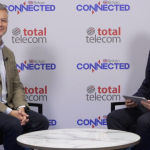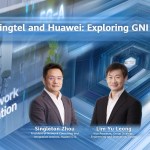News
Ahead of Total Telecom Congress 2018 next week, Total Telecom spoke with Staffan Göjeryd, CEO, Telia Carrier, about the emerging trends that are shaping the industry
What trends are you noticing developing in the industry at the moment?
Firstly, we’re seeing a significant shift towards greater information transparency within the industry as a whole. This extends across all customer touchpoints, from service data and traffic information to continuous implementation and operational updates. Data which was previously not readily available is increasingly being shared in order to enhance transparency and raise the overall customer experience. As a consequence of this, together with a need for greater operational efficiency, we are seeing an overall ‘softwareization’ of the telco ecosystem. We’ve now progressed beyond buzzwords and wishful thinking to a point where this is really starting to become a key differentiator for anyone who wants to stay relevant and indeed, profitable.
As “the cloud” gets ever bigger, there is a burgeoning need to store information closer to the edge. This is predominantly driven by enterprises, as they step away from local computing resources and start moving critical workflows into centralized locations. This is also fueled to a certain extent by meta changes such as 5G and IoT. The balance between cloud, edge and on-premises computing is creating a new ecosystem interplay that requires a high degree of flexibility and a suitable network core to support it.
What new markets are you particularly interested in and why?
Telia Carrier has, over the past few years, expanded into a number of entirely new countries and extended our footprint into an abundance of new datacenters within tier 2 and tier 3 markets. And we see an ongoing need for this type of market expansion in the foreseeable future. This is primarily a result of evolving connectivity needs in previously underserved markets, together with emerging demand for new cloud connect and transport services. In addition, we’re seeing greater convergence between the previously well delineated wholesale and enterprise segments, largely a result of a general enterprise drive towards cloudification and the higher bandwidth requirements that this creates. The ever-increasing importance of Internet and software-based WAN solutions establishes our network and what we already do well as a compelling proposition for an entirely new set of clients that we had not previously addressed – at least not directly.
What are the main challenges that the industry is facing today and how can they be overcome?
From my point of view, this can be summarized by pace, relevance and fragmentation. The required pace at which we evolve as an industry and develop new ways to support and interact with our customers. We also need to stay relevant and retain our position as the primary choice for connectivity needs and enabling services within the overall digital ecosystem. We then need to respond to increasing market fragmentation as a growing number of niche players enter the arena in some areas. Ultimately, this makes selecting partners a difficult proposition for both ourselves and our customers.
In many ways, this goes back to my earlier comments. Beyond innovation in connectivity technology itself, automation and digitalization will play a critical role. The telco industry is still fundamentally ‘manual’ with a mountain of legacy systems and cumbersome, non-automated routines. During the last couple of years though, we have seen clear signs that functionality and ways of working that were previously deemed unrealistic, are now within reach. Self-service and full transparency are the critical building blocks that pave the way for the evolution we need.
What new technologies are you particularly interested in at the moment, and how will they affect the telecoms industry?
Much of the innovation we’ve seen in high-speed transmission technology during recent years has been driven by the datacenter industry. Essentially, this arose from a compelling need to transport extremely large volumes of intra-campus traffic across short distances, at a much lower price point than established optical vendors could provide. In turn, the benefits of this technology are now being transferred to Wide Area Network (WAN) networks and when combined with a more open-minded approach to telco hardware design in general, using ‘white box’ components that can be mixed and matched in a more flexible way, we’re seeing fundamental changes to the way network infrastructure is procured and operated. Apart from a tangible impact on WANs from a cost point-of-view, this is radically changing equipment cycle times.
On top of this, there is tremendous untapped potential if we consider advances in data analytics, AI and machine learning when they are applied to backbone networks and we are already running some PoCs and practical use cases in these areas.















